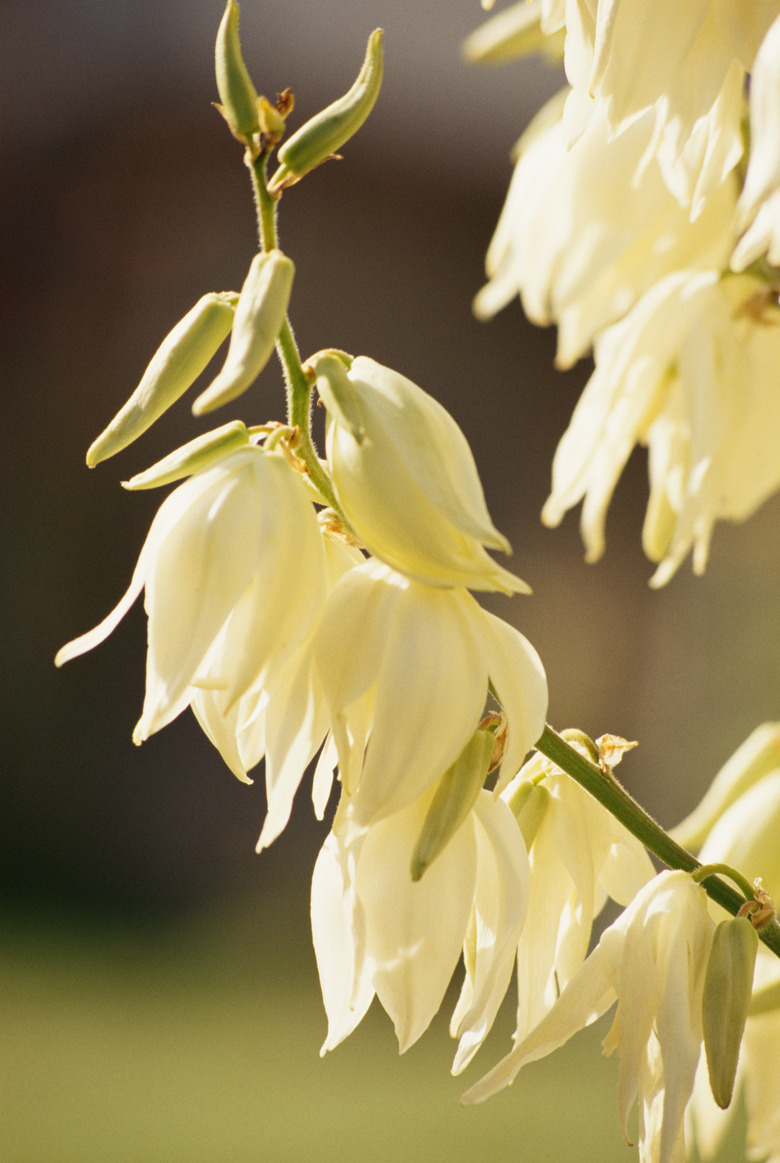The Best Soil For Yucca
Plant names such as Spanish Bayonet and Adam's Needle conjure inhospitable images. These names belong to cultivars of yucca, a rugged plant adapted to challenging growing conditions. Their imposing features add bold touches to landscapes. Duplicating their native habitats, the best soil for yucca has sharp drainage, alkaline pH, high porosity and low fertility.
Step 1
Yucca is a member of the Agave plant family. It is a succulent, which is a plant that is able to store water in its leaves and stems. This adaptation helps yucca survive drought and ensures its survival. In its native habitats of Florida and the Southwest, yucca grows in sandy soils. It is tolerant of other soil types, including clay and loam, as long as soils are well draining, according to the University of Tennessee Institute of Agriculture.
Soil pH and Fertility
Step 1
Most plants prefer slightly acidic soils, with a pH of 6.0 or lower, but the best soil for yucca is slightly alkaline, at least above 6.0, according to the University of Florida Cooperative Extension Service. If soil test results are lower than 6.0, lime is added to soil to raise pH. Yucca thrives in poor soil having low fertility, and require little to no fertilization. It is commonly called a "bulletproof plant" because it excels under conditions where most plants fail.
Step 2
- Yucca is a member of the Agave plant family.
- If soil test results are lower than 6.0, lime is added to soil to raise pH.
- Yucca thrives in poor soil having low fertility, and require little to no fertilization.
Drainage
Step 1
Although yucca grows naturally on dry, sandy soils, it can also grow in heavy soils if it is planted above grade, such as on a raised berm, which provides sharp drainage. The highest point in a landscape features yucca as a dramatic specimen plant, while also providing the drainage it needs. The University of Florida IFAS Extension recommends not planting yucca unless drainage is superior. They advocate container growing as another option, especially in areas containing compacted soils.
Soil Amendments and Potting Mixes
Step 1
The University of Minnesota Extension office offers a simple test to determine whether soil is too wet for planting yucca. After squeezing moisture out of a handful of soil, the soil should crumble. If it sticks together, it's too wet. If landscape soil needs amending, equal parts of coarse sand and native soil improve porosity. Mulching is advised for most landscape plants to conserve moisture, but it is not recommended for yucca. Adding sand or perlite to soil in containers, or using commercially packaged succulent mixes, ensures good drainage.
Step 2
- Although yucca grows naturally on dry, sandy soils, it can also grow in heavy soils if it is planted above grade, such as on a raised berm, which provides sharp drainage.
- The highest point in a landscape features yucca as a dramatic specimen plant, while also providing the drainage it needs.
